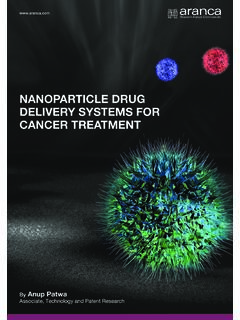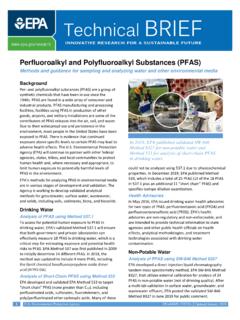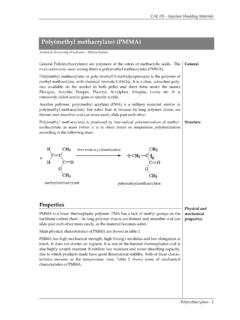Transcription of Unit 4 Drug Stability
1 Drug Stability 75 Drug Stability Definition: Drug Stability means the ability of the pharmaceutical dosage form to maintain the physical, chemical, therapeutic and microbial properties during the time of storage and usage by the patient. It is measured by the rate of changes that take place in the pharmaceutical dosage forms. Expiry date: means that drug can not be used after this date because the concentration of drug is decreased and become lower than therapeutic concentration.
2 In addition, some products of drug degradation are toxic and harmful to patients. Note! After the opening of the drug container, the expiry date will be shorter as a result of the decreased concentration of drug during usage and the effects of external factors. Example: 1. Eye drops: can be used for one month after opening the droppers 2. Syrups and suspension of antibiotics: can be used for one week by storage in room temperature and for two weeks by storage in 4C . 3. Tablets and capsules remain stable in the package but after removal the expiry date will change 4. Ampoules: must be used immediately but the vials (multidose) are stable for 24 h for the presence of preservatives.
3 Factors affecting drug Stability : 1. Temperature: high temperature accelerate oxidation, reduction and hydrolysis reaction which lead to drug degradation 2. pH: Acidic and alkaline pH influence the rate of decomposition of most drugs. Many drugs are stable between pH 4 and 8. Weekly acidic and basic drugs show good solubility when they are ionized and they also decompose faster when they are ionized. So if the pH of a drug solution has to be adjusted to improve solubility and the resultant pH leads to instability then a way out of this tricky problem is to introduce a water -miscible solvent into the product.
4 It will increase Stability by: - suppressing ionization - reducing the extreme pH required to achieve solubility - enhancing solubility and - reducing the water activity by reducing the polarity of the solvent. For example, 20% propylene glycol is placed in chlordiazepoxide injection for this purpose. Drug Stability 76 Reactions catalyzed by pH are monitored by measuring degradation rates against pH, keeping temperature, ionic strength and solvent concentration constant.
5 Some buffers such as acetate, citrate, lactate, phosphate and ascorbate buffers are utilized to prevent drastic change in pH. Sometimes pH can have a very serious effect on decomposition. As little as 1 pH unit change in pH can cause a change of ten fold in rate constant. So when we are formulating a drug into a solution we should carefully prepare a pH decomposition profile and then formulate the solution at a pH which is acceptable physiologically and Stability -wise also. 3. Moisture: a. water catalyses chemical reactions as oxidation, hydrolysis and reduction reaction b.
6 water promotes microbial growth 4. Light: affects drug Stability through its energy or thermal effect which lead to oxidation 5. Pharmaceutical dosage forms: solid dosage forms are more stable than liquid dosage forms for presence of water . 6. Concentration: rate of drug degradation is constant for the solutions of the same drug with different concentration. So, ratio of degraded part to total amount of drug in diluted solution is bigger than of concentrated solution. Stock solutions: are concentrated solutions which diluted by using ( syrup 85%) at high concentration the Stability is high 7.
7 Drug incompatibility: reactions between components of pharmaceutical dosage forms it self or between these components and cover of the container . 8. Oxygen: exposure of drug formulations to oxygen affects their Stability Three stabilities of drug must be considered:: 1. Physical Stability 2. Chemical Stability 3. Microbiologicall Stability A. Physical Stability : Physical instabilities possibilities are: 1. Crystal formation in pharmaceutical preparations: Causes: Drug Stability 77a.
8 Polymorphism phenomena: Chloramphenicol (change of amorphous to crystalline form. b. Saturated solution: by different temperature precipitation of solute may occur. c. In suspension: when very fine powder is used a part of suspending agent will dissolve then precipitate as crystal. 2. Loss of volatile substances from pharmaceutical dosage forms: Examples: a. Aromatic waters b. Elixirs c. Spirits d. Some types of tablets which contain aromatic water (Nitroglycerin tablets) 3. Loss of water : This can be seen in the following dosage forms: a. Saturated solution: by loss of water they become supersaturated and precipitate as crystals is formed b.)
9 Emulsions: Loss of water lead to separation of the two phases and change to other type c. Creams: especially oil/ water , they become dry by loss of water d. Pastes e. Ointments: especially aqueous base ointments Humectants is added to the previous dosage forms which defined as hydrophilic substances added to aqueous phase to absorb water from atmosphere and prevent its loss from the dosage forms. Examples: Glycerin 4. Absorption of water : This phenomena can be seen in the following pharmaceutical forms: a. Powders: Liquification and degradation may occur as a result of absorption of water b. Suppositories which base made from hydrophilic substances as Glycerin, Gelatin, poly ethylene glycol.
10 The consistency of these forms becomes jelly-like appearence 5. Change in crystalline form: Example: Cocoa butter which is capable of existing in four polymorphic forms. Drug Stability 78B. Chemical Stability : It is discussed in chemical incompatibility unit C. Microbiological Stability : 1. Contamination from microorganisms is a big problem for all formulations containing moisture but it can be a bother in solid dosage forms also if some natural polymers are used because many natural polymers are fertile sources of microorganisms.










